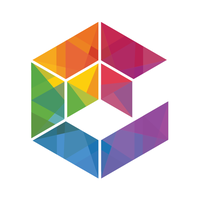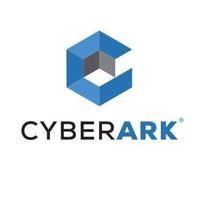The New Frontier of Cybersecurity: Navigating the AI and Gen Z Landscape
April 11, 2025, 5:04 pm
In the ever-evolving world of cybersecurity, two significant forces are reshaping the landscape: the rise of AI agents and the emergence of Gen Z as a digital powerhouse. These developments present both opportunities and challenges. Organizations must adapt to secure their environments while addressing the vulnerabilities of a generation that has grown up in a digital age.
The digital realm is a vast ocean. In this ocean, AI agents are like schools of fish—autonomous, unpredictable, and multiplying rapidly. CyberArk, a leader in identity security, has recognized this shift. They recently unveiled the CyberArk Secure AI Agents Solution, designed to protect these digital entities. This solution is a lighthouse guiding organizations through the murky waters of identity security.
AI agents are not just tools; they are becoming digital identities in their own right. They communicate, access sensitive information, and even modify their behaviors. This complexity creates a new attack surface for cybercriminals. According to Gartner, by 2028, a quarter of enterprise breaches will stem from AI agent abuse. This statistic sends a clear message: organizations must not let security lag behind innovation.
CyberArk’s solution aims to secure these AI agents from day one. It combines human identity security principles with the scalability of machine identity security. This dual approach is essential. Organizations need to manage the privileged access of AI agents, ensuring they operate within safe parameters. The CyberArk Identity Security Platform offers a comprehensive view, treating each agent as a privileged identity subject to continuous oversight.
But what does this mean in practice? The solution provides several key capabilities. First, it offers discovery and context, allowing organizations to observe known and shadow agents across various environments. This visibility is crucial for understanding the digital landscape. Next, it enforces privilege control, ensuring that agents have the least amount of access necessary. This minimizes the risk of misuse.
Moreover, the solution includes automated lifecycle management. This feature helps organizations onboard and offboard agents securely, eliminating stale access that could be exploited. Governance is another critical aspect, ensuring compliance with organizational and regulatory requirements. In a world where regulations are tightening, this capability is invaluable.
As organizations embrace AI, they must also consider the human element. Enter Gen Z, a generation that is both digital natives and cybersecurity risks. Recent findings from CyberArk reveal a paradox: while Gen Z values their digital identities, they are also the most vulnerable to cyber threats. This generation is more likely to prioritize personal digital assets, such as photos and videos, as crucial components of their identity. Yet, they face significant exposure to cyber threats, with only 20% reporting they have never been hacked.
This vulnerability is alarming. Gen Z’s confidence in online platforms is moderate, with many having experienced online fraud. They are willing to invest in privacy, with 71% ready to pay for enhanced security. However, their concerns differ from older generations. While baby boomers prioritize financial fraud, Gen Z is more worried about facial data and the implications of AI in fraud.
The overlap between personal and professional digital identities adds another layer of complexity. Gen Z views their workplace emails as critical to their digital identity. This perception raises the stakes for businesses, as cybercriminals increasingly target login credentials to access sensitive data. The potential for workplace accounts to be compromised is a growing concern, especially given Gen Z's higher likelihood of falling victim to cyber attacks.
Organizations must take these insights seriously. The cybersecurity landscape is shifting, and businesses must adapt. Collaboration between individuals, policymakers, and organizations is essential to strengthen digital security. As cyber threats evolve, so too must our strategies for defense.
In conclusion, the intersection of AI and Gen Z presents a unique challenge. AI agents are reshaping the identity security landscape, while Gen Z's digital habits are redefining vulnerabilities. Organizations must navigate this new frontier with agility and foresight. By implementing robust security measures and understanding the concerns of younger generations, businesses can create a safer digital environment for all. The future of cybersecurity hinges on our ability to adapt and innovate in the face of these emerging threats.
The digital realm is a vast ocean. In this ocean, AI agents are like schools of fish—autonomous, unpredictable, and multiplying rapidly. CyberArk, a leader in identity security, has recognized this shift. They recently unveiled the CyberArk Secure AI Agents Solution, designed to protect these digital entities. This solution is a lighthouse guiding organizations through the murky waters of identity security.
AI agents are not just tools; they are becoming digital identities in their own right. They communicate, access sensitive information, and even modify their behaviors. This complexity creates a new attack surface for cybercriminals. According to Gartner, by 2028, a quarter of enterprise breaches will stem from AI agent abuse. This statistic sends a clear message: organizations must not let security lag behind innovation.
CyberArk’s solution aims to secure these AI agents from day one. It combines human identity security principles with the scalability of machine identity security. This dual approach is essential. Organizations need to manage the privileged access of AI agents, ensuring they operate within safe parameters. The CyberArk Identity Security Platform offers a comprehensive view, treating each agent as a privileged identity subject to continuous oversight.
But what does this mean in practice? The solution provides several key capabilities. First, it offers discovery and context, allowing organizations to observe known and shadow agents across various environments. This visibility is crucial for understanding the digital landscape. Next, it enforces privilege control, ensuring that agents have the least amount of access necessary. This minimizes the risk of misuse.
Moreover, the solution includes automated lifecycle management. This feature helps organizations onboard and offboard agents securely, eliminating stale access that could be exploited. Governance is another critical aspect, ensuring compliance with organizational and regulatory requirements. In a world where regulations are tightening, this capability is invaluable.
As organizations embrace AI, they must also consider the human element. Enter Gen Z, a generation that is both digital natives and cybersecurity risks. Recent findings from CyberArk reveal a paradox: while Gen Z values their digital identities, they are also the most vulnerable to cyber threats. This generation is more likely to prioritize personal digital assets, such as photos and videos, as crucial components of their identity. Yet, they face significant exposure to cyber threats, with only 20% reporting they have never been hacked.
This vulnerability is alarming. Gen Z’s confidence in online platforms is moderate, with many having experienced online fraud. They are willing to invest in privacy, with 71% ready to pay for enhanced security. However, their concerns differ from older generations. While baby boomers prioritize financial fraud, Gen Z is more worried about facial data and the implications of AI in fraud.
The overlap between personal and professional digital identities adds another layer of complexity. Gen Z views their workplace emails as critical to their digital identity. This perception raises the stakes for businesses, as cybercriminals increasingly target login credentials to access sensitive data. The potential for workplace accounts to be compromised is a growing concern, especially given Gen Z's higher likelihood of falling victim to cyber attacks.
Organizations must take these insights seriously. The cybersecurity landscape is shifting, and businesses must adapt. Collaboration between individuals, policymakers, and organizations is essential to strengthen digital security. As cyber threats evolve, so too must our strategies for defense.
In conclusion, the intersection of AI and Gen Z presents a unique challenge. AI agents are reshaping the identity security landscape, while Gen Z's digital habits are redefining vulnerabilities. Organizations must navigate this new frontier with agility and foresight. By implementing robust security measures and understanding the concerns of younger generations, businesses can create a safer digital environment for all. The future of cybersecurity hinges on our ability to adapt and innovate in the face of these emerging threats.

